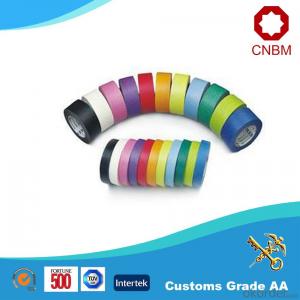Heat Tape PVC Pipe: Insulating Your Plumbing
Winter is coming, and with it, the chill that can turn your once warm and cozy home into a chilly, drafty place. One of the areas that can be particularly affected by the cold is your plumbing system. The last thing you want is to deal with frozen pipes or burst pipes that can cause significant damage to your home and your wallet. That’s where heat tape for PVC pipes comes in. It’s a simple, yet effective solution to insulate your plumbing and keep it functioning smoothly even in the harshest of winters.
What is Heat Tape for PVC Pipes?
Heat tape, also known as heat cable or self-regulating trace heating, is a flexible heating element designed to wrap around pipes, providing a consistent and even heat source to prevent freezing. It’s particularly useful for PVC pipes, which are more susceptible to freezing than other types of pipes due to their rigidity and lack of flexibility.
Why Choose Heat Tape for PVC Pipes?
PVC pipes are a popular choice for plumbing systems due to their durability, affordability, and ease of installation. However, they are not as forgiving when it comes to cold temperatures. PVC pipes can become brittle and crack, leading to leaks and potential water damage. Heat tape helps to mitigate this risk by providing a protective layer of heat that keeps the pipes flexible and prevents them from freezing.
How to Install Heat Tape on PVC Pipes
Installing heat tape on PVC pipes is a straightforward process that you can do yourself, saving you the cost of hiring a professional. Here’s a step-by-step guide to help you get it right:
1. Identify the Pipes: First, identify the pipes that are most at risk of freezing. These are typically the ones that run through unheated areas of your home, such as garages, basements, or crawl spaces.
2. Measure the Pipes: Measure the length of the pipes that you need to cover with the heat tape. Make sure to leave some extra length to account for any overlaps or adjustments.
3. Select the Right Heat Tape: Choose a heat tape that is specifically designed for PVC pipes and is rated for the temperatures you expect in your area.
4. Apply the Heat Tape: Start by cutting the heat tape to the appropriate length and then carefully wrap it around the pipe, making sure it’s snug but not too tight. Overlapping the tape can help ensure better heat distribution.
5. Secure the Tape: Use the adhesive backing on the heat tape to secure it in place. You can also use plastic ties or clips to hold it in place if needed.
6. Connect to a Power Source: Finally, connect the heat tape to a power source. Make sure to follow all electrical safety guidelines and consider using a timer or thermostat to control when the heat tape is active.
Maintenance and Safety Tips
While heat tape is a low-maintenance solution, there are a few things you should keep in mind to ensure it works effectively and safely:
– Check the Tape Regularly: Inspect the heat tape periodically to ensure it’s still securely attached and functioning properly.
– Avoid Excessive Wrapping: Overlapping the tape is good, but wrapping it too tightly can restrict the pipe’s movement and potentially cause damage.
– Monitor Electrical Usage: Heat tape can add to your energy bill, so be mindful of how much you’re using it and consider using energy-saving options like timers or thermostats.
– Safety First: Always follow safety guidelines when working with electricity and ensure that the heat tape is properly insulated and secured to prevent any accidents.
The Benefits of Using Heat Tape for PVC Pipes
Using heat tape for PVC pipes comes with several benefits that can help you save time, money, and stress during the winter months:
– Prevention of Frozen Pipes: The primary benefit is the prevention of frozen and burst pipes, which can cause significant damage to your home.
– Cost-Effective: Heat tape is an affordable solution compared to the potential repair costs of damaged pipes.
– Easy to Install: As mentioned, installing heat tape is a DIY-friendly task, saving you the cost of hiring a professional.
– Energy Efficient: With the right controls, heat tape can be an energy-efficient way to protect your pipes.
– Longevity: When properly maintained, heat tape can last for several winters, providing ongoing protection for your plumbing system.
When to Consider Alternatives to Heat Tape
While heat tape is a great solution for many situations, there are times when you might want to consider alternatives:
– For Older Homes: If you live in an older home with a complex plumbing system, you might need a more comprehensive approach to insulation.
– In Areas of High Humidity: High humidity can sometimes interfere with the effectiveness of heat tape.
– For Aesthetic Reasons: If the appearance of the heat tape is a concern, you might want to explore other options that are less visible.
Conclusion
Heat tape for PVC pipes is a practical and efficient way to insulate your plumbing system during the winter months. It’s a cost-effective solution that can save you from the headaches and expenses associated with frozen and burst pipes. By following the proper installation and maintenance guidelines, you can ensure that your plumbing system stays warm, safe, and functional all season long. So, as the temperature drops and the snow starts to fall, rest easy knowing that your pipes are protected with heat tape.

